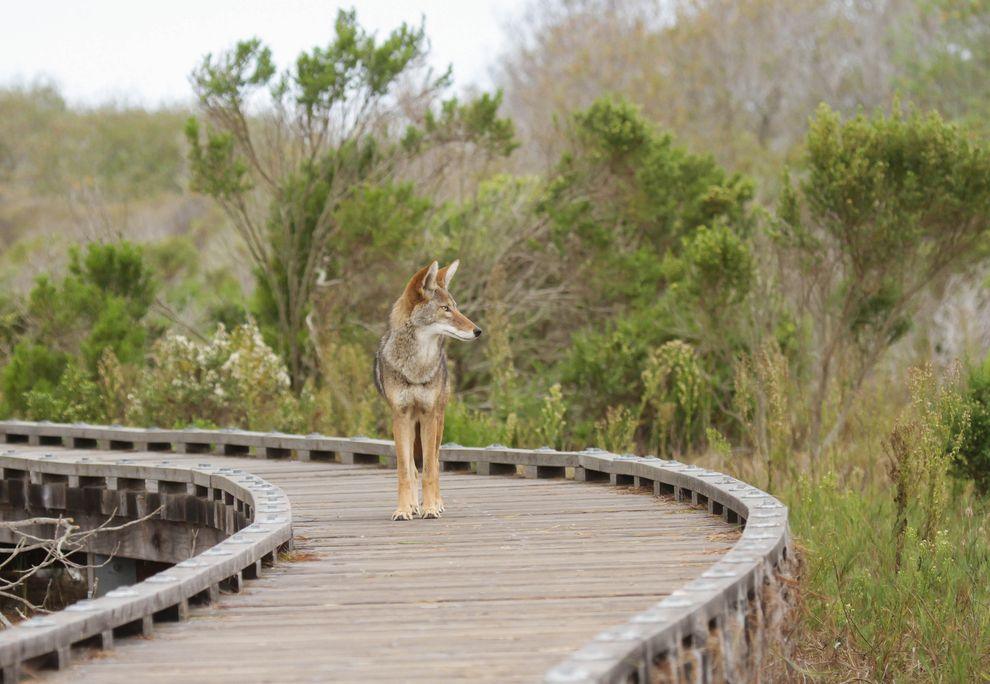coywolves may be a new species

The recent sightings of coyotes come during their breeding season, which runs from January to April but is at its height in mid-February.
To set the record straight, Marion Larson of the state Division of Fisheries and Wildlife said the animals are not wolves.
There has been one confirmed wolf sighting in the state since the 1800s, Ms. Larson said. That was in Shelburne Falls when state wildlife biologists were called out when several sheep were killed at a farm. The day after the investigation was conducted, they were called back to inspect what the farmer felt was a very large coyote. It proved to be a wolf that likely wandered down to Massachusetts from Canada.
The Eastern coyotes also may not be coyotes, but a hybrid of three types of canid subspecies.
“I don’t like the term coyote,” said Jonathan G. Way, a research scientist affiliated with the Clark University George Perkins Marsh Institute.
Mr. Way said he prefers to call the animals coywolves and believes they may be a new species, rather than the Western coyote’s Eastern cousin.
Genetic testing of Eastern coyotes, or coywolves, found they are about 60 percent coyote, 30 percent Eastern wolf and 10 percent dog, Mr. Way said.
The coyote-dog connection is a more recent discovery.
“It was created in around 1919 in Algonquin Park in Southern Ontario, about 150 miles north-northwest of New York. Originally hybrid coyote-wolves, the animals picked up dog DNA sometime in the 1920s,” Mr. Way said.
Other than the visit by a wolf to Shelburne Falls, the only other place in New England where there have been confirmed wolf sightings is in Maine.
The reason people might think the coywolves are wolves is they are much larger than Western coyotes. The coywolves weigh 30 to 40 pounds, about 20 percent heavier than their counterparts out west. They are still significantly smaller than Eastern wolves, which are likely their cousins, and can weigh 80 pounds, Mr. Way said.
Gray, or Western wolves, may weigh up to 120 pounds, according to Mr. Way, and appear to be as large as a deer.
Not only are coywolves larger than Western coyotes, they are seen in many different colors. While Western coyotes are gray or tan colored, Ms. Larson said coywolves can have similar color or blond, as red as a red fox or even black.
“I’ve had an all-black coyote zipping through my yard,” she said.
Ms. Larson said she has also seen one that looked like a Husky dog. Coyotes reached Massachusetts in the 1950s and eventually spread across the state, reaching Eastern Massachusetts by the 1970s and populating throughout the state by the 1980s.


nockedup Massachusetts outdoors.